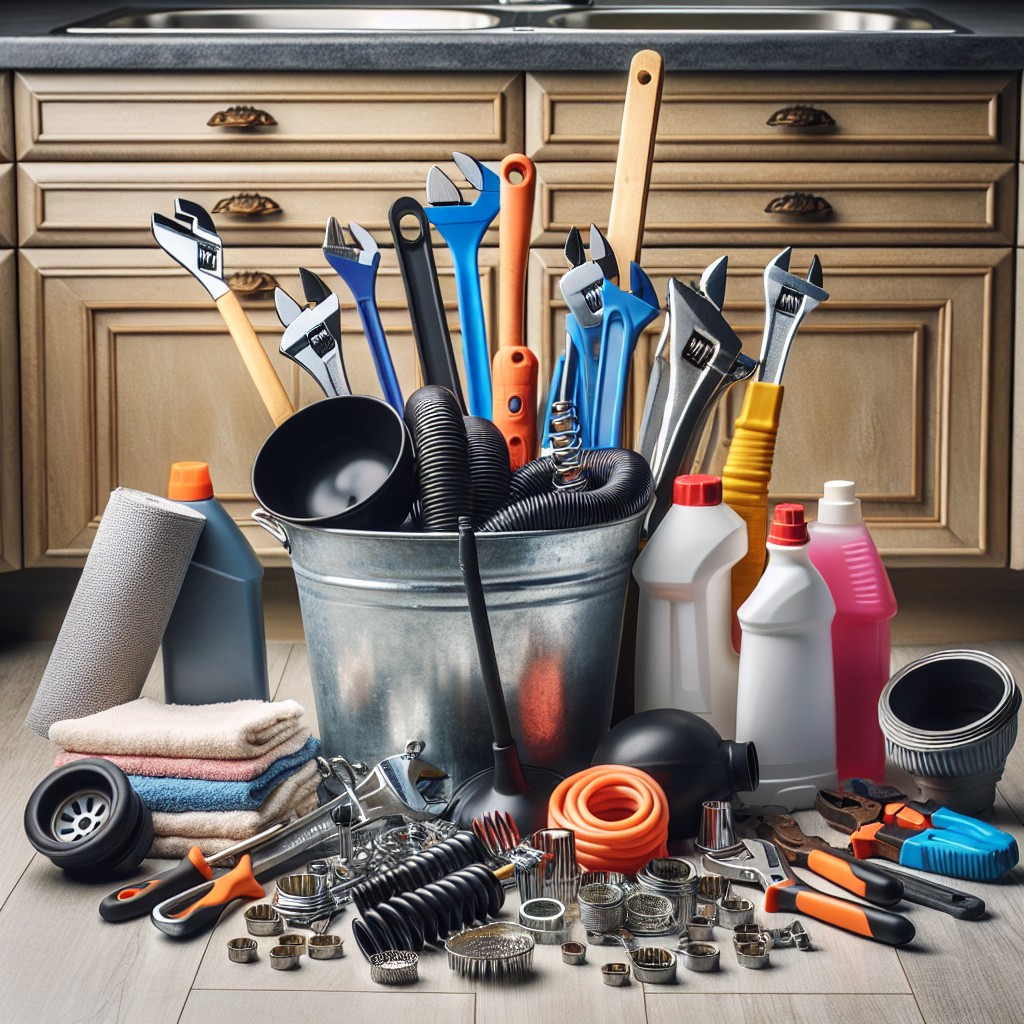Last updated on
Effortlessly learn practical steps to quickly unclog a double kitchen sink filled with standing water, saving you both time and stress, in this straightforward guide.
Key takeaways:
- Prepare the right tools: bucket, gloves, plunger, drain cleaner, flashlight.
- Remove standing water with a bowl or vacuum.
- Use a plunger with a tight seal to dislodge the clog.
- Use a natural drain cleaner with baking soda and vinegar.
- Let the mixture sit and flush with hot water.
What's Inside
What You’ll Need

Gearing up with the right tools before you tackle a clogged double kitchen sink is crucial for a smooth and successful unclogging process. You will need:
- A bucket or a large bowl for bailing out the water.
- Rubber gloves to protect your hands from dirty water and potential germs.
- A plunger, ideally one with a flat bottom, to create a strong seal and apply pressure to the drain.
- A natural drain cleaner—combining baking soda and vinegar can be an effective, eco-friendly option.
- A flashlight to see down the drain if necessary.
- A pot or kettle for boiling water, which helps in the natural drain cleaning process.
- A wrench or pliers in case you need to check the P-trap under the sink.
Having these items prepared and within reach smooths out the workflow and minimizes the frustration that can come with mid-task interruptions. Each tool plays a role in facilitating the unclogging process, ensuring you’re not left scrambling in the middle of the task.
Equipment / Tools
Equipping yourself with the right tools is the initial step to effectively tackle a clogged double kitchen sink. Here’s what you’ll need:
- Bucket or Bowl: To bail out standing water.
- Rubber Gloves: Keeps your hands clean and protects from bacteria.
- Plunger: Regular or sink-specific, to create pressure that dislodges the clog.
- Drain Snake or Auger: To reach deeper into the pipe if plunging fails.
- Baking Soda & Vinegar: For an environmentally friendly approach to break down the blockage.
- Channel-Type Pliers: Necessary if you need to remove and clean the P-trap.
- Flashlight: To illuminate under-sink areas and pipes during inspection.
- Towels/Rags: For cleanup and to address any spills or drips during the process.
With these items at hand, you’ll be ready to confront the clog with confidence.
Remove the Standing Water
Before attempting to unclog your sink, it’s essential to deal with the standing water. Begin with a bowl or a cup to bail out the water, pouring it into a bucket or another sink. Alternatively, you might find a wet-dry vacuum extremely useful for this step – it’s effective and fast.
Mop up remaining moisture with old towels or sponges to ensure a dry workspace, which will be crucial for the next steps where you’ll need to apply direct pressure to the drain. Removing this water not only gives you clear access to the drain but also prevents any potential mess from the subsequent unclogging process.
Remember to be gentle during this process to avoid any water splashing or spilling onto other areas of your kitchen.
Unclog the Drain With a Plunger
With your plunger at the ready, start by ensuring a tight seal over one drain opening while securely plugging the other drain’s opening with a stopper or damp cloth. This is crucial for concentrated plunging power.
Next, fill the exposed side with enough water to cover the plunger’s head. Grip the handle firmly and plunge vigorously in a vertical motion. This forceful push-and-pull creates pressure to dislodge the blockage.
Keep at it for a minute or two and then check if water drains smoothly. If resistance persists, repeat the process until the obstruction is released and water flows freely. Remember, patience and persistence are key in effectively using a plunger.
Use a Natural Drain Cleaner
When faced with a stubborn clog, resorting to harsh chemicals might seem like the easiest solution, but natural alternatives can be surprisingly effective and are gentler on your pipes. To whip up a potent concoction, start with boiling water. Simply pour a kettle of hot water down the drain to soften the clog.
Next, combine a cup of baking soda with one cup of vinegar – a dynamic duo in the natural cleaning world.
Baking soda acts as a cleaning agent due to its mild abrasive properties and ability to absorb odors. Vinegar, acidic in nature, reacts with baking soda, creating a fizzing action that helps to dislodge grime and buildup.
Once you’ve poured this mixture down the sink, let the magic happen for about 15 minutes. Conclude this method by flushing through with more hot water, which should help to clear away the loosened debris. It’s an eco-friendly and simple approach that harnesses ingredients likely already in your pantry, making it easily accessible and cost-effective.




